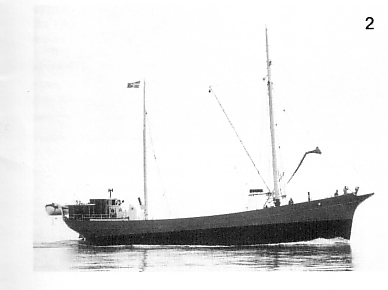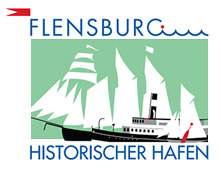EYE OF THE WIND

in London zur Brigantine umgebaut

Segelzeichnung Gaffeschoner Typ Tommi

| Schiffsname | EYE OF THE WIND |
| Ex-Namen | FRIEDRICH, SAM, MERRY, ROSE-MARIE, MERRY, EYE OF THE WIND |
| Nationalität | |
| Heimathafen | Jersey |
| Typ | Küstenfrachtschoner |
| Rigg | |
| Baujahr | 1911 |
| Bauwerft | Conrad Lühring |
| Bauort | Hammelwarden, Brake |
| Länge (London) | m |
| Länge (Meßbrief) | m |
| Länge über alles | 40,23 m |
| Breite | 7,01 m |
| Tiefgang | 2,70 m |
| Segelfläche | 750 m² |
| Motor | Segel |
| Leistung | 600 PS |
| Museumshafen |
Über das Schiff
In Schweden wechselweise als Fischereifahrzeug (im Sommer) und Frachtschiff (im Winter) eingesetzt. Nach Brand aufgelegt, in England zur Brigantine umgebaut. Als Schulschiff 2 Weltumsegelungen.
Seit 1986 keine Informationen.
Der Lühring-Schoner FRIEDRICH wurde 1911 für die La-Plata-Fahrt gebaut. 1926 in Schweden motorisiert, diente er dort vorwiegend als Küstenfrachter. Abb.2: Als ROSE-MARIE in den 60er Jahren. Nach Strandung und Feuer an Bord wurde er 1973 nach England verkauft und dort zur Brigantine umgebaut (Abb. 3): Der Segelplan Abb. 1 zeigt den etwas kleineren Schoner SCHWALBE.
(Aus: Register dt. Segelschiffe J. Kaiser, S. 37)
Posted by: werner_jurkowski werner_jurkowski@yahoo.de werner_jurkowski
Sun Dec 19, 2010 3:02 pm (PST)
Dear Friends,
EYE OF THE WIND is back to German ownership since April 1, 2009. Her homeport is Gilleleje, Denmark. See my comments at:
http://www.shipspotting.com/gallery/photo.php?lid=1223806
Her homepage is:
http://www.eyeofthewind.net/index.php/en.html
Greetings from the white Berlin,
Werner
Die Historie
1911-16 FRIEDRICH, Hamburg
1916-24 FRIEDRICH, Rostock
1924-26 SAM, Kalmar/S erster Motor: Jönköpings-Glühkopf 80 PS
1926-56 MERRY, Stockevik 1937 Sandiaverken A.B. Zeitakter
1956-66 ROSE-MARIE, Grundsund
1966-70 MERRY, Torsö
1970-73 MERRY, Göteborg
danach EYE OF THE WIND, London/GB
2012 EYE OF THE WIND Jersey/ GB
Der Lühring-Schoner FRIEDRICH wurde 1911 für die La-Plata-Fahrt gebaut. 1926 in Schweden motorisiert, diente er dort vorwiegend als Küstenfrachter. Abb.li Bild 2: Als ROSE-MARIE in den 60er Jahren. Nach Strandung und Feuer an Bord wurde er 1973 nach England verkauft und dort zur Brigantine umgebaut. Der Segelplan zeigt die Segelzeichnung zu Lührings meistgebauten Gaffeschoner vom Typ Tommi, Zeichnung H:Karting
In Schweden wechselweise als Fischereifahrzeug (im Sommer) und Frachtschiff (im Winter) eingesetzt. Nach Brand aufgelegt, in England zur Brigantine umgebaut. Als Schulschiff 2 Weltumsegelungen.
Kenntnisstand 1986 Register dt. Segelschiffe J. Kaiser, S. 37
„Das zählt Schiff heute zu den bekanntesten und gepflegtesten Seglern der Welt“ es wird in einem Atemzug genannt mit einem weiteren Überberlebendem Lühring-Schoner ANNY von Hamburg.
Ausführliche Geschichte in H:Karting, Geschichte der Lühringwerft Bd. II Vom Segel zum Motor, S. 19-23
u. H. Karting Deutsche Schoner Bd. V S. 88-92
In the “Stapellauf” 1911 her name was “Friedrich”. She had been built in the dockyard of Lühring. 1923 she has been sold to Sweden and from then on she was named “Merry”. She used to be a transport ship in the East and North Sea for 50 years. During those years her masts had been removed and she was converted to a motor boat. After a fire in 1969 she seemed to have come to the end of her life cycle. Fortunately she was found by a group of windjammer enthusiasts who 1973 started rebuilding her as a sailing ship.
She was being equipped with 2 masts and rigged as brigantine. The group was looking for the original material for the rig and the construction all over England and the world and found it. A former dance hall floor made from resistant teakwood was being used for the construction of the deckhouses and age-old church benches were being used for the lower saloon, which create a unique maritime atmosphere. All blocks were carved from wood and partly by complex handcraft. Like that with the rebuilding of the “Eye of the Wind” a unique ship-jewel has been created.
Already her very first tour led her around the world. Australia, South Sea, Cape Hoorn are only a few of those positions that sets sailor’s hearts racing. Her first lap around the world finished in 1978 and the “Eye of the Wind” was announced the flagship for the operation Drake a two year scientific expedition under Prince Charles. The changing crew on the “Eye of the Wind” came from various countries but after a short while all of them were united in their love for the ship. In general it is being said that ships have personality. On the “Eye of the Wind” you can feel it even more and it is a throughout pleasant and reliable personality. Over the century a “fan club” came to life that is still active today over the internet where members follow the “Eye of the Wind” history and set dates to meet back on board.
The optic and the special atmosphere of the ship is probably what made her a movie star. Without knowing that it is the “Eye of the Wind” many people know her from movies like “Blue Lagoon”, “White Squal”, “Taipan” or “Savage Island”.
In 1990 the “Eye of the Wind” sailed the South Sea and took part in the 200 year celebration of the settlement of the Island Pitcairn (mutiny of the Bounty). In 1991 she passed Cape Horn for the second time and returned to England 11 months later. As a sailing-training-ship she was sailed many different seas and visited the best known harbors in the world.
In 2000 a Danish entrepreneur renovated her completely and equipped her with state-of-the-art technology and electronics for navigation. Fortunately he took care that her traditional character was preserved. Even today setting the sails occurs due to the use of pure muscular strength.
Up until 2009 the “Eye of the Wind” was not accessible for public and after the sudden death of her owner was looking into uncertain future. On April 1st, 2009 she found a new owner with the Forum Media Group. Now she is being used for leadership trainings to practice in the “small world” of the ship and apply the knowledge to the “big world”. Under the direction of her new owner she is also going to discover the oceans again and find new fans and friends.
Eignerangaben.
To sail on the „Eye“
